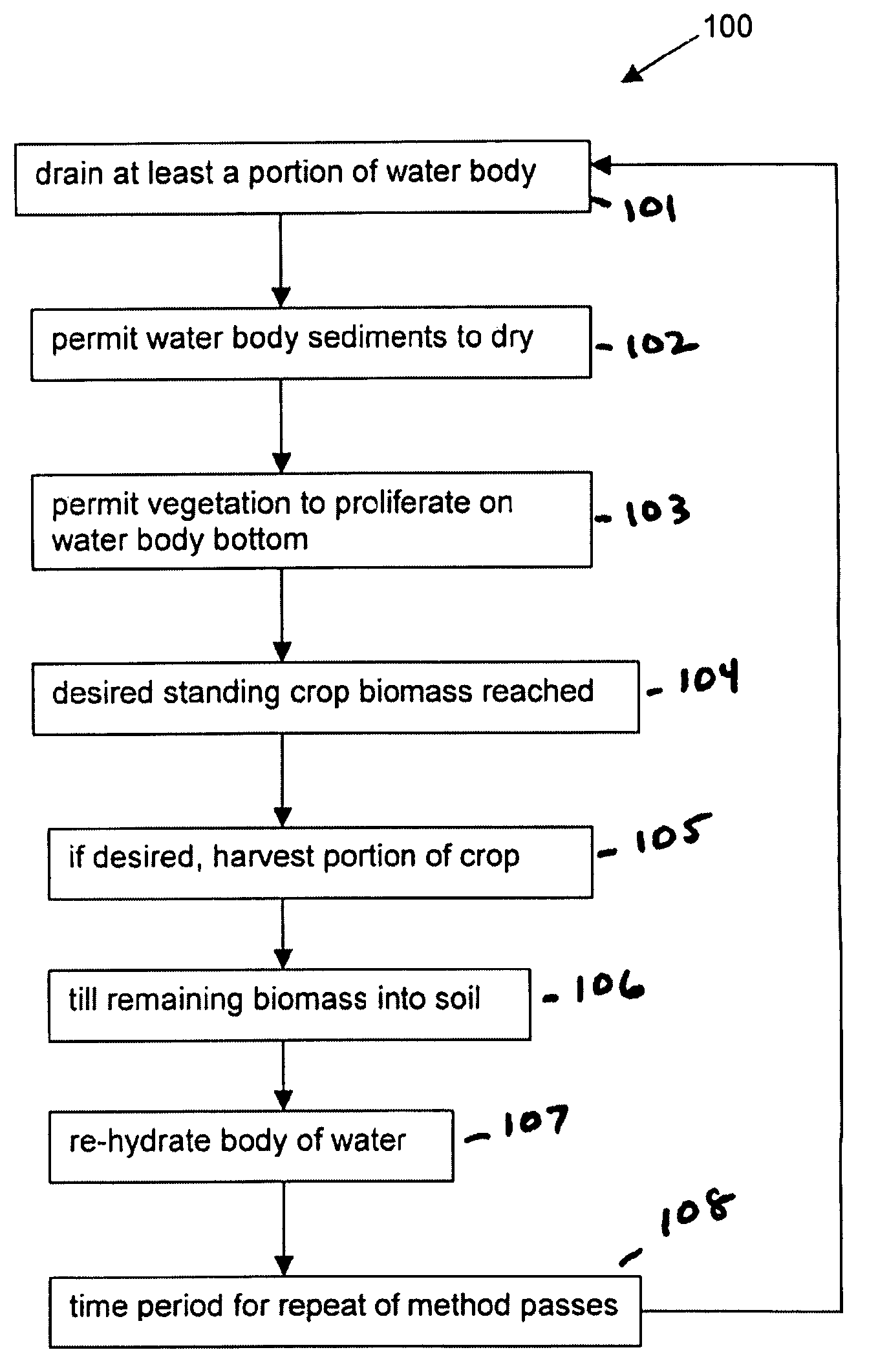Plant biomass management system and method
a biomass management and plant technology, applied in biological water/sewage treatment, water/sludge/sewage treatment, chemistry apparatus and processes, etc., can solve the problems of reducing the removal rate of some water-borne constituents, such as phosphorus (p), and the concentration of pollutants in newly accreted sediments that exceed the level of natural soil constituents, so as to reduce the export of pollutant.
- Summary
- Abstract
- Description
- Claims
- Application Information
AI Technical Summary
Benefits of technology
Problems solved by technology
Method used
Image
Examples
Embodiment Construction
[0017]A description of the preferred embodiments of the present invention will now be presented with reference to THE FIGURE.
[0018]The present system and method 100 are directed to an inexpensive technique for amending wetland, lake, or reservoir soils and sediments, for at least reducing pollutant export and improving the physical texture of the soils and sediments. The technique can be used in substantially any water body, or portion of a water body, that can be drained periodically.
[0019]The method comprises the steps of draining at least a portion of a water body (block 101). This draining can be carried out by removing water, or can occur naturally as a result of local climate conditions. The water body can contain existing wetland / aquatic vegetation. The water body sediments and wetland / aquatic vegetation are permitted to dry (block 102), and vegetation is permitted to proliferate thereon (block 103). The vegetation can comprise natural terrestrial or moisture-tolerant vegetat...
PUM
 Login to View More
Login to View More Abstract
Description
Claims
Application Information
 Login to View More
Login to View More - R&D
- Intellectual Property
- Life Sciences
- Materials
- Tech Scout
- Unparalleled Data Quality
- Higher Quality Content
- 60% Fewer Hallucinations
Browse by: Latest US Patents, China's latest patents, Technical Efficacy Thesaurus, Application Domain, Technology Topic, Popular Technical Reports.
© 2025 PatSnap. All rights reserved.Legal|Privacy policy|Modern Slavery Act Transparency Statement|Sitemap|About US| Contact US: help@patsnap.com


